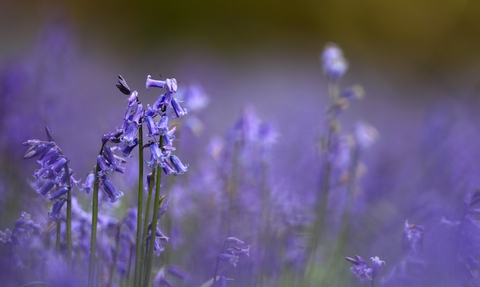
A carpet of bluebells (Hyacinthoides non-scripta) in an ancient woodland, Hertfordshire, UK - Luke Massey/2020VISION
Wildlife Gardening Tips for April
Make a deadwood garden
Log piles are another good creature feature to add to your garden. They will provide areas for shelter and food for many different species, including amphibians, Hedgehogs, lizards and invertebrates such as beetles. Fungi and lichens will also quickly colonise the dead wood.
- Collect together logs and sticks of various different shapes, sizes and species of tree.
- Find a shady area of the garden.
- Pile them together. You can be as neat or as messy as you like as long as you create lots of cracks and crevices for wildlife to crawl into!
Meadow management
Now is the time to sow your wildflower meadow. 5g per m2 is usually sufficient – scatter it on the ground and then either roll the soil or walk over it to ensure the seed is in good contact with the soil. Water lightly. If it is in a small area, you can put twiggy sticks over it to protect the soil and seeds from birds and cats until they start growing.
Provide nesting material
Put out nesting material to help the birds e.g. feathers, wool, string, moss, dog hair. Avoid materials that chicks could get their legs tangled in like cotton wool and wiry horse hair.

© Nick Upton/2020VISION
Gardener’s friends
Help your veggies grow by encouraging natural pest controllers to visit your garden.
- Ladybirds and hoverfly larvae are natural predators of pests like aphids, so plant some of the pollen-rich plants that they like, such as marigolds, chives and fennel.
- Frogs, Toads and Newts all eat slugs. Add a pond to your garden (instructions in the November sheet) to encourage them in.
- Glow Worms (which are actually beetles) eat slugs and snails. You can help them by providing shelter for their predatory larvae in the form of log piles.
- Hedgehogs are big eaters of slugs and snails, help them in your garden by installing hedgehog holes in fences so they can move easily between gardens and avoid using slug pellets which cause poisoning of hedgehogs.
